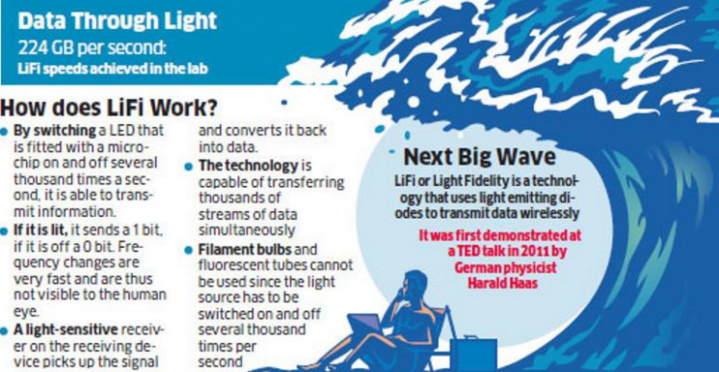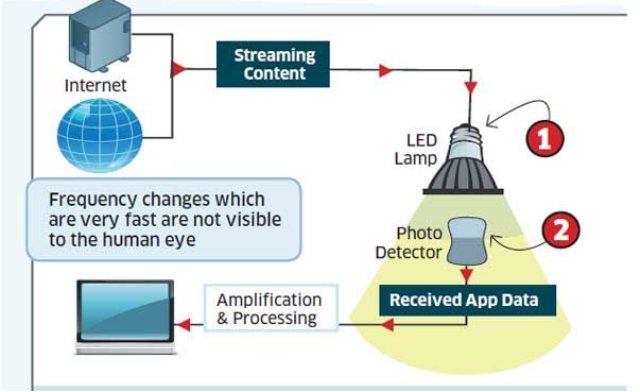 Using off-the-shelf LEDs and solar cells, Harald Haas and his team have pioneered a new technology that transmits data using light, and it may just be the key to bridging the digital divide. Take a look at what the future of the Internet could look like.
Using off-the-shelf LEDs and solar cells, Harald Haas and his team have pioneered a new technology that transmits data using light, and it may just be the key to bridging the digital divide. Take a look at what the future of the Internet could look like.
Imagine switching on a light bulb, and getting Internet access at a mind-blowing speed of 1 GB/second, which is 100 times faster than WiFi currently available. A new technology, known as LiFi, could one day offer internet speeds one hundred times faster than the WiFi we use today. Scientists have achieved speeds in the lab of up to 224 GB per second. That’s the equivalent of downloading 18 movies in the blink of an eye. LiFi, or light fidelity, is now moving to trials in the real world. This is not fiction anymore, as an Estonian startup founded by an Indian has successfully tested the concept in real world.
The world’s ever-growing desire for more data at faster rates is pushing WiFi’s capacity to its limits. WiFi is achieved by transmitting data through radio waves, but can only transfer so much at a time. By 2019, it is estimated that the world will be exchanging roughly 35 quintillion bytes of information each month. Because radio frequencies are already in use and heavily regulated, that data is going to struggle to find a spot in line. WiFi is simply running out of space.
Capacity is only part of the problem. WiFi is not a terribly efficient solution. The base stations responsible for transmitting radio waves only function at about 5 per cent efficiency, most of the energy being used to cool the stations. For those transmitting sensitive data, security is also a problem, as radio waves travel through solid objects such as walls and doors.

Professor Harald Haas from University of Edinburgh, who is regarded as the inventor of Li-Fi, had earlier shared some interesting thoughts during a TED talk in 2011. As per him, �All we need to do is fit a small microchip to every potential illumination device and this would then combine two basic functionalities: illumination and wireless data transmission,� Haas said. �In the future we will not only have 14 billion light bulbs, we may have 14 billion Li-Fis deployed worldwide for a cleaner, greener and even brighter future.�






